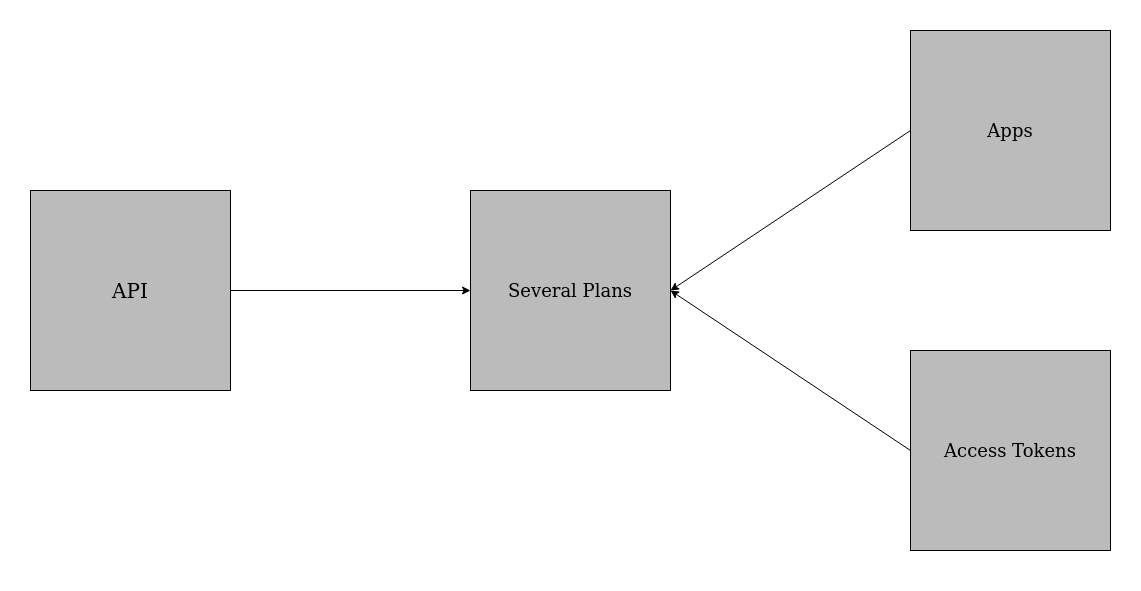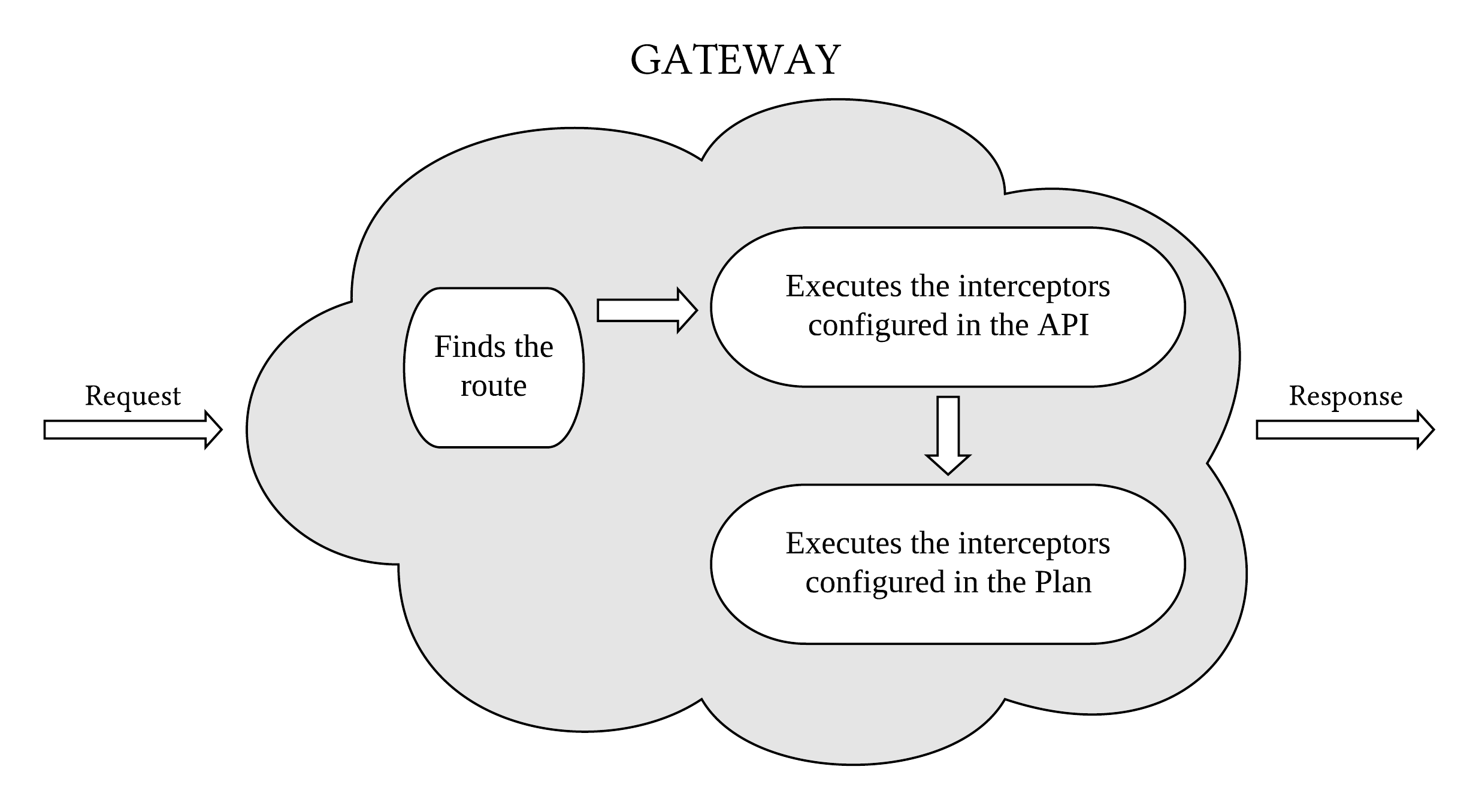Plans
A plan defines a set of interceptors that will run within the Gateway. An API may contain several plans and a plan is executed only when linked to an app or an access token.
By grouping interceptors into a plan, you can delimit different usage tiers to your APIs, establishing distinct flow policies for each tier. This gives you better control over how each type of user will consume your APIs.
| An API can have several plans, representing different flow policies for one API, but each plan can only be linked to one API. |
| Remember that each plan must be linked to an app or access token. |
The image below represents the relationship between APIs, plans and apps/access tokens.

How plans work
The following image illustrates the way a plan works inside the Gateway.

From the moment a request comes in, this is how it works:
-
Once the route is identified (following the information registered in the API), the interceptors configured in the API are executed;
-
When the interceptors run, the Gateway identifies the apps and/or access tokens linked to the API;
-
The Gateway runs the interceptors of the plans associated with the apps and/or access tokens identified.
Plans listing
You can access all existing plans clicking on Plans, on the main menu of the Manager. On this same page, you can create new plans or edit existing ones (read more about it over the next pages).
The Plans page includes a list of existing plans and a search field, in which you can look up plans by API or keywords.

The list displays the name and description of each plan, as well as the API that is associated to it. If the plan is the API’s default plan, a tag will be displayed next to its name informing so.
| Each API can have multiple plans, but only one of them is registered as the default plan. |
Share your suggestions with us!
Click here and then [+ Submit idea]